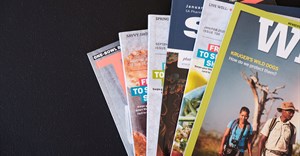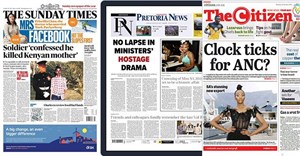Print media gets a shot of youth serum
“Yes, they're techno-savvy and so will readily turn to the Net or cellphones to get the information they need, but they enjoy reading print for the same reason older generations do,” he continues.
Across the world, publishers of traditional print titles have feared that the rise of alternative sources of content, such as the Internet and mobile phones, would see the wholesale decline of their readership figures. Young people in particular, born into a technologically advanced world, were thought to be the most likely to turn their backs on the old forms of media.
However, where previously print media in South Africa was consumed by 58.2% of the 16 - 24 age group, print titles are now read by 62.6% of young people. Both the newspaper sector and the magazine sector have benefited from more young readers. Newspapers now reach 46.1% of this age group, up from 42.6% in AMPS 2007B, while magazines are found in 46.5% of young hands, up from 43.8%. The 16 - 24 age group is also one of the key groups responsible for the rise of the Internet, according to SAARF.
While increased readership by young people was not enough to boost the total magazine sector's readership, it was a key factor in the significant growth of total newspaper readership over AMPS 2007B.
Increased print readership isn't confined to any one segment of the youth market, as a wide range of titles, appealing to varying demographics, have enjoyed increased youth readership.
In newspapers, titles such as The Weekender have gained significantly. This title has 32 000 more young readers than in AMPS 2007B, growing its proportion of readers in the youth market from 9.8% previously to 37.5%. Ilanga's 138 000 more young readers has upped the paper's proportion of the 16 - 24 demographic from 21.7% to 30.8%. The Sunday Times (from 799 000 young readers to 979 000), and Sunday World (from 4.6% reach to 6.2% reach) are also on the list of newspaper titles which have attracted more young readers.
In magazines, titles such as the 0 - The Oprah Magazine, are looking a little younger. The mag boosted its reach of young people from 1.6% to 2.4%. Afrikaans title Insig gained 5000 more young readers, while Food & Home Entertaining's youth readership grew from 13.5% of its total readership to 21.3%.
Sheds light
Research conducted for the World Association of Newspapers, as part of a research project entitled Youth Media DNA, sheds light on AMPS's results. Released in June 2007, one of the findings was that “most participants [aged 15-24] still value more traditional media sources and formats [to get their news and information], because they are perceived as being more accurate, reliable and trustworthy” (www.wan-press.org).
Another traditional media type to gain young media consumers was television, which Youth Media DNA says is the SA youth's “most trusted news and information format - more so than the Internet or newspapers”.
Total TV across the week has significantly more 16 - 24 year-olds than in the previous AMPS release - from 26.8% to 27.3%, improving its reach into this market from 84.6% to 86.6%. SABC2 and e.tv were the main recipients of this increased youth viewership.
New media types have not been left out. Young people were a significant force in the overall growth seen in Internet consumption in AMPS 2008A. Weekly Internet access by young people is up from 6.3% in AMPS 2007B to 7.8% of young people in AMPS 2008A. The growth seen in total across four weeks has also been driven by the 16 - 24 demographic - 9.8% of young people access the Net over a four-week period, up from 8.2% previously.


















